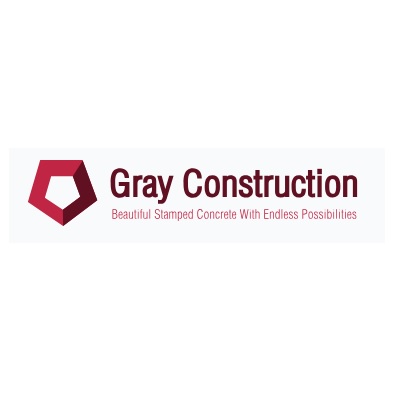
Stampedcon
Uploaded on Oct 4, 2024
Category
Business
Decorative concrete combines durability with aesthetic appeal, offering customizable designs for floors, patios, and driveways. Enhance your space with unique textures and colors that mimic high-end materials.
Category
Business
Decorative Concrete
Elevate Your Space with
Decorative Concrete
Stylish and Versatile
Solutions
Gray
Construction
Decorative concrete is transforming the way we think about concrete
surfaces, offering a stylish and versatile alternative to traditional flooring
and hardscaping options. Whether you’re looking to upgrade your home’s
interior, enhance your outdoor living area, or add unique touches to
commercial spaces, decorative concrete provides endless design
possibilities. In this blog, we’ll explore the benefits of decorative concrete,
popular techniques, and how it can enhance the aesthetic appeal of your
spaces.
What is Decorative Concrete?
Decorative concrete involves the use of various techniques and
treatments to enhance the appearance of concrete surfaces. Unlike plain
concrete, which is functional but often unremarkable, decorative concrete
combines functionality with artistic flair. It can mimic the look of other
materials such as natural stone, brick, or wood, providing both aesthetic
appeal and durability.
Benefits of Decorative Concrete
1. Aesthetic Appeal:
Decorative concrete offers a wide range of design options, allowing you to
customize the look of your surfaces. With techniques like stamping,
staining, and coloring, you can achieve the appearance of luxurious
materials at a fraction of the cost.
2. Durability:
Like traditional concrete, decorative concrete is highly durable and can
withstand heavy foot traffic, weather conditions, and everyday wear and
tear. Its long lifespan makes it a cost-effective choice for both residential
and commercial applications.
3. Low Maintenance:
Decorative concrete is easy to maintain compared to other materials.
Regular cleaning and occasional sealing are usually sufficient to keep it
looking its best. It is resistant to mold, mildew, and pests, making it a
practical choice for various environments.
4. Cost-Effective:
While decorative concrete can achieve the look of more expensive
materials, it is often more affordable. This makes it an attractive option for
those looking to enhance their spaces without breaking the bank.
5. Versatility:
Decorative concrete can be used in a variety of applications, including
flooring, countertops, walls, and outdoor surfaces. Its adaptability makes
it suitable for both residential and commercial projects.
Popular Decorative Concrete Techniques
1. Stamped Concrete:
Stamped concrete involves applying patterns and textures to freshly
poured concrete to mimic the appearance of materials such as brick, slate,
or cobblestone. It’s ideal for driveways, patios, and walkways.
2. Concrete Staining:
Concrete staining adds color and depth to concrete surfaces. Acid stains
create rich, variegated hues, while water-based stains offer a more
uniform appearance. Staining is perfect for interior floors, countertops,
and decorative walls.
3. Concrete Overlay:
A concrete overlay is a thin layer of decorative concrete applied over
existing surfaces. It can be stamped, stained, or textured to give old
surfaces a fresh, new look without the need for complete replacement.
4. Exposed Aggregate:
Exposed aggregate involves removing the top layer of concrete to reveal
the aggregate (small stones) underneath. This technique provides a
textured, slip-resistant surface that is both visually appealing and
functional.
5. Polished Concrete:
Polished concrete is achieved by grinding and polishing the surface to a
high sheen. It creates a sleek, modern look and is ideal for high-traffic
areas like commercial spaces and modern homes.
How to Incorporate Decorative Concrete
1. Interior Floors:
Decorative concrete can enhance the look of interior floors, offering a
stylish alternative to traditional flooring materials. Use staining or
polishing techniques to create unique and attractive designs.
2. Outdoor Spaces:
Patios, driveways, and walkways can be transformed with stamped or
stained concrete, providing an attractive and durable surface that
complements your outdoor living area.
3. Countertops and Walls:
Decorative concrete can also be used for countertops and walls, providing
a seamless, customizable surface that can be tailored to your design
preferences.
4. Commercial Applications:
For businesses, decorative concrete can create a professional, polished
appearance that stands up to heavy use while adding visual interest to
spaces like showrooms, lobbies, and retail areas.
Conclusion
Decorative concrete offers a blend of durability, versatility, and
aesthetic appeal, making it an excellent choice for enhancing various
surfaces and spaces. With a range of techniques and design options
available, you can achieve the look of more expensive materials at a
fraction of the cost. Whether for residential or commercial use, decorative
concrete can elevate the style and functionality of your space, providing a
long-lasting and beautiful solution for your design needs.
CONTACT US
Gray Construction
133 Valley View Dr,
City: Ephrata
State: Pennsylvania, Zip Code: 17522
Country: USA
Ph: 717-733-8212
Email: [email protected]
Web: https://stampedconcreteandlandscaping.com/
THANK YOU

Comments